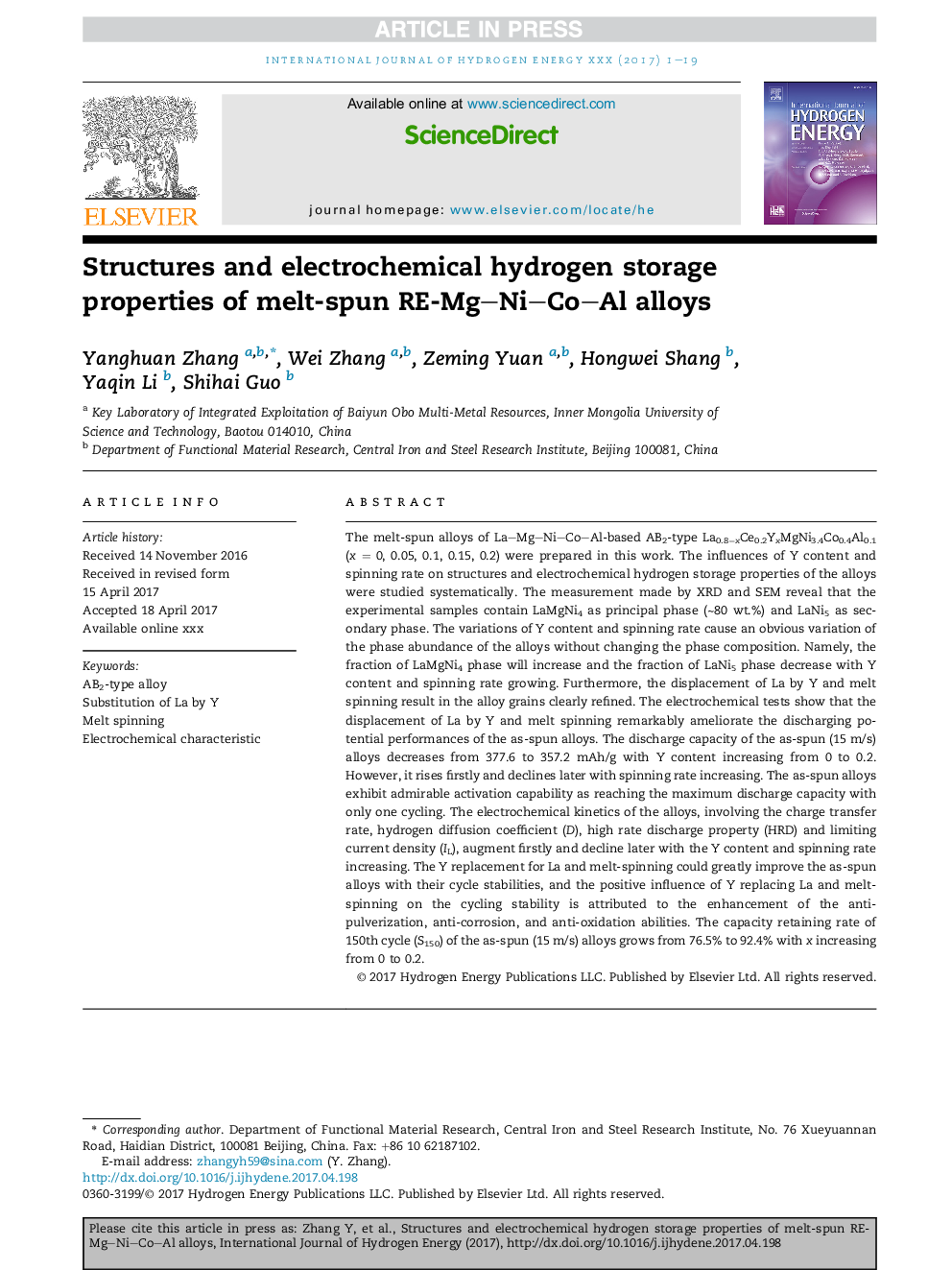| Article ID | Journal | Published Year | Pages | File Type |
|---|---|---|---|---|
| 5146951 | International Journal of Hydrogen Energy | 2017 | 19 Pages |
Abstract
The melt-spun alloys of La-Mg-Ni-Co-Al-based AB2-type La0.8âxCe0.2YxMgNi3.4Co0.4Al0.1 (x = 0, 0.05, 0.1, 0.15, 0.2) were prepared in this work. The influences of Y content and spinning rate on structures and electrochemical hydrogen storage properties of the alloys were studied systematically. The measurement made by XRD and SEM reveal that the experimental samples contain LaMgNi4 as principal phase (â¼80 wt.%) and LaNi5 as secondary phase. The variations of Y content and spinning rate cause an obvious variation of the phase abundance of the alloys without changing the phase composition. Namely, the fraction of LaMgNi4 phase will increase and the fraction of LaNi5 phase decrease with Y content and spinning rate growing. Furthermore, the displacement of La by Y and melt spinning result in the alloy grains clearly refined. The electrochemical tests show that the displacement of La by Y and melt spinning remarkably ameliorate the discharging potential performances of the as-spun alloys. The discharge capacity of the as-spun (15 m/s) alloys decreases from 377.6 to 357.2 mAh/g with Y content increasing from 0 to 0.2. However, it rises firstly and declines later with spinning rate increasing. The as-spun alloys exhibit admirable activation capability as reaching the maximum discharge capacity with only one cycling. The electrochemical kinetics of the alloys, involving the charge transfer rate, hydrogen diffusion coefficient (D), high rate discharge property (HRD) and limiting current density (IL), augment firstly and decline later with the Y content and spinning rate increasing. The Y replacement for La and melt-spinning could greatly improve the as-spun alloys with their cycle stabilities, and the positive influence of Y replacing La and melt-spinning on the cycling stability is attributed to the enhancement of the anti-pulverization, anti-corrosion, and anti-oxidation abilities. The capacity retaining rate of 150th cycle (S150) of the as-spun (15 m/s) alloys grows from 76.5% to 92.4% with x increasing from 0 to 0.2.
Related Topics
Physical Sciences and Engineering
Chemistry
Electrochemistry
Authors
Yanghuan Zhang, Wei Zhang, Zeming Yuan, Hongwei Shang, Yaqin Li, Shihai Guo,
